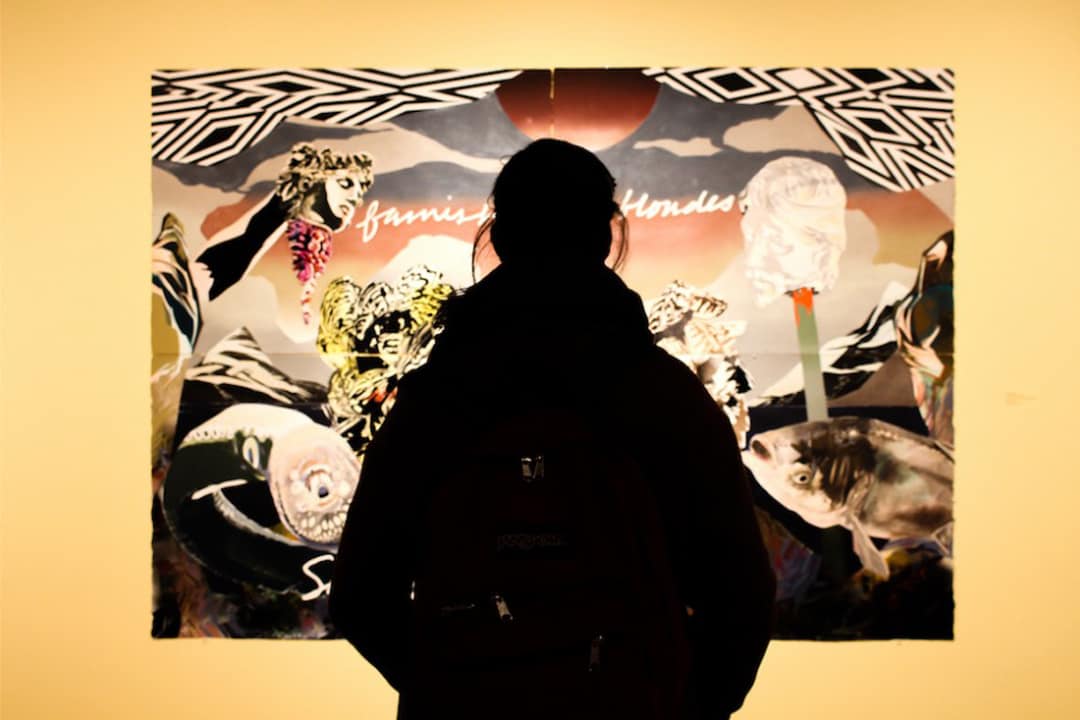What does scientific discourse have to do with artistic expression? For a research team at the Princess Margaret Cancer Centre, the answer is “everything.”
We once thought of our right and left brains as separate forces responsible for logical and creative thought, respectively. But scientific progress has shown us otherwise, as mental processes require that the whole brain works together in harmony to approach a task.
Just as the corpus callosum brings our hemispheres together as a band of nerve fibres, so too should science and art harmonize — so believes Dr. Mathieu Lupien, a Senior Scientist at the Princess Margaret Cancer Centre.
Lupien incorporates art into his professional sphere to generate creative discourse between his close-knit team of researchers. He offers a unique approach to team-building by inviting his team to take a stroll through the Art Gallery of Ontario.
Each team member takes the time to walk through and choose a piece of artwork that speaks to them. Lupien then has the team come together as a group to share their chosen piece and engage in dialogue about what inspired them.
“I get to see the world from their perspective and they get to see mine from theirs,” said Lupien in an interview with The Varsity. The process helps the researchers better understand how they see the world through different lenses.
Lupien expresses that this is an exercise in using something creative, like art, to share who we are as scientists. It gives the team a glimpse into each other’s worlds. For example, if a member really enjoys the intricate detail in a piece, we can understand that the fine details they reflect in their own work are something they value. This helps us interpret the work they do in a more meaningful way.
“Our imagination is the only way to explore the unknown,” said Lupien. “We are working in uncharted territory sometimes, so creating an environment that is conducive to open, creative thought is important for our work.”
How can students integrate art and science into their own research methods?
Lupien describes that translating scientific works in an intelligible way is an art in itself. Science, technology, engineering, and mathematics can be highly complex areas, full of jargon which can be intimidating for many students interested in the field. Using creative expression is one way to translate complexities in an imaginative way.
He demonstrates this idea in his description of his research on epigenetics: the study of how the activity of our genes can change, without changing our DNA sequences. He describes the genome as six billion letters of DNA that form words that are different in nature. When they are organized into sentences, each of them tells a unique story.
In order to form specific parts of our body, such as muscle and brain tissue, we organize our genome, represented here as letters, in different ways to create distinct sentences. The folding process is guided by epigenetic events, or post-it notes, which highlight the regions of our genome that need to be read.
Perhaps we can say that art relates in the same way. Each stroke of the brush or strike of the pen creates a unique image, and the artist goes over certain areas of the painting with these tools to highlight parts of the piece. Sometimes this disrupts the image, which can create chaos. Other times, this enhances the image with clarity.
Like epigenetics, one must follow these fine lines or broad strokes to understand how the larger image, or genome, has come to be. Lupien emphasizes that fostering creative thought can open a world of possibilities for all walks of life. “Bringing these values into your everyday practice as a researcher can serve to nourish your approach to work,” he said.
Experiencing art can also serve as time for our ideas to incubate, perhaps creating a period of unconscious processing for approaching problems in research. Taking from the famous 1929 works of Graham Wallas, The Art of Thought, incubation allows us to process problems in a manner whereby no direct effort is exerted.
We can optimize the way we process pre-existing knowledge by exposing ourselves to creative mediums such as art. This may lead to new approaches in scientific work. Ultimately, generating a scientific discourse with the expression of art can bring forth creative magic that inspires research.
“In research, there are two things of value — there is knowledge and creativity,” said Lupien.
“You need to have balance. Never shy away from engaging in creative thought. You never know where it will take you.”


